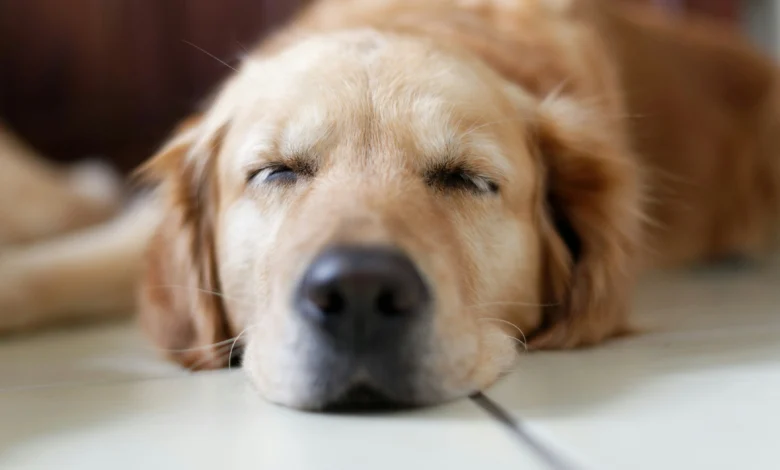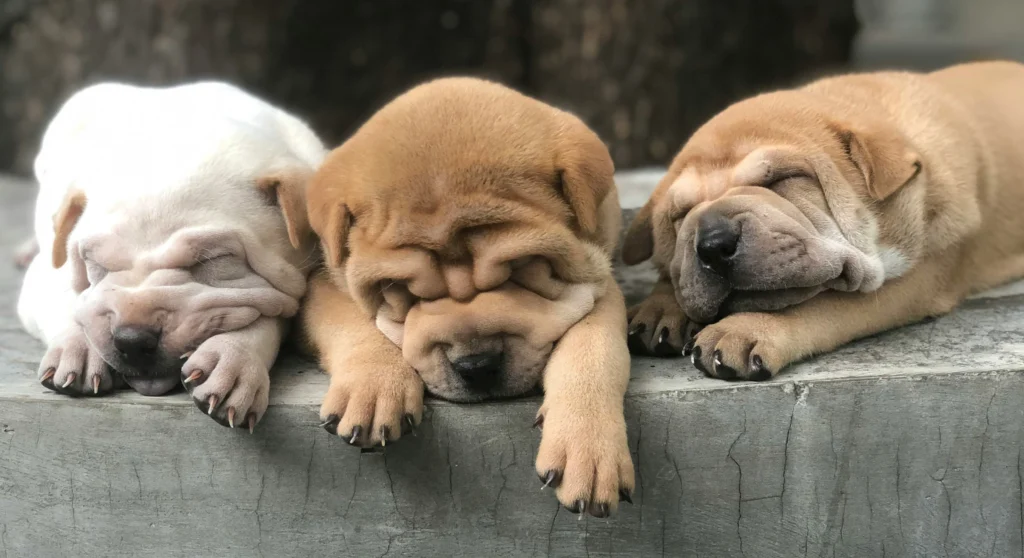Why Do Dogs Snore? Understand the Causes

Picture this: your furry companion curls up beside you, their rhythmic snores filling the room. At first, it’s endearing—a sign of deep relaxation. But over time, those nighttime noises might leave you wondering: is this normal? Just like humans, many pups experience occasional snoring. However, understanding when it’s harmless or a red flag can bring peace of mind.
Snoring occurs when airflow through the nose or throat becomes partially blocked. In medical terms, this is called stertor. While flat-faced breeds like Bulldogs often snore due to their unique anatomy, other factors—like allergies, sleep positions, or even weight—can play a role. Sometimes, it’s as simple as dust irritating their airways. Other times, it could hint at infections or respiratory issues needing attention.
You’ll notice similarities between canine and human snoring. Both involve relaxed throat tissues vibrating during sleep. But unlike us, dogs can’t tell you if something feels off. That’s why recognizing patterns matters. Occasional snorts might be harmless, but persistent loud sounds paired with daytime fatigue could signal trouble.
Understanding Dog Snoring Anatomy
Your pet’s snuffling nighttime sounds often trace back to their physical structure. Brachycephalic breeds—those with short noses and flat faces—face unique challenges due to compressed airways. These anatomical quirks create turbulence as air struggles to flow smoothly.
When Airway Design Limits Breathing
Three key features often restrict airflow in short-nosed companions:
- An elongated soft palate drapes over the windpipe like a heavy curtain
- Pinched nostrils collapse inward during inhalation
- Abnormal laryngeal tissue flaps create extra vibration
Breeds Built for Noisy Nights
French Bulldogs typify these challenges—their narrow tracheas resemble drinking straws. Pugs battle with nostrils tighter than pencil erasers. English Bulldogs often need surgery to trim excess throat tissue causing obstruction.
| Breed | Nostril Type | Soft Palate Length | Trachea Width |
|---|---|---|---|
| French Bulldog | Stenotic | Extended | Narrow |
| English Bulldog | Pinched | Oversized | Restricted |
| Pug | Collapsed | Thickened | Compressed |
Recognizing these traits helps you distinguish harmless snorts from dangerous respiratory distress. Always monitor for blue-tinged gums or excessive daytime sleepiness—signs your friend needs veterinary evaluation.
why do dogs snore: Key Factors Behind the Noise
Ever wondered what turns your pup’s peaceful nap into a nighttime symphony? Multiple elements—from health conditions to everyday habits—can amplify those rumbling sounds. Let’s break down the most common triggers.
Allergies, Infections, and Weight Challenges
Swollen airways often result from seasonal allergies or respiratory infections. Pollen or dust can inflame nasal passages, while bacterial issues create mucus buildup. Overweight pets face extra hurdles: neck fat presses on the windpipe, narrowing airflow. Breeds like Bulldogs or Pugs are especially vulnerable due to preexisting breathing limitations.
- Infections may cause throat inflammation lasting weeks
- Excess weight adds pressure to chest muscles during sleep
- Chronic nasal congestion mimics snoring in humans
Sleep Habits and Obstructions
Your companion’s favorite sleeping pose matters. Flat-on-the-back positions let the tongue slide backward, partially blocking the throat. Small objects like grass blades or toy fragments can also lodge in nostrils, creating whistling sounds. Watch for sudden changes: if snoring starts abruptly, check for foreign items.
- Elevated beds reduce airway compression
- Side-sleeping minimizes tongue-related blockages
- Routine nose checks prevent long-term obstructions
Persistent loud noises paired with daytime lethargy? Time for a vet visit. Early intervention tackles underlying causes before they escalate.
Related post: Why Is My Dog Panting at Night?
Lifestyle and Environmental Influences on Dog Snoring
Your dog’s sleep environment plays a bigger role in nighttime noises than you might think. From pollen-filled spring days to dry winter air, everyday factors can amplify breathing challenges. Even small adjustments to their routine or space might quiet those rumbles.
Seasonal Allergies and Temperature Triggers
Pollen, dust mites, or mold spores inflame nasal passages, narrowing air pathways. Summer heat worsens this—swollen tissues vibrate louder during sleep. Cold, dry air in winter thickens mucus, creating similar obstructions. Keep humidity levels between 30-50% to ease congestion.
Weight plays a critical role. Extra pounds add pressure to the throat and chest muscles, especially in breeds prone to breathing issues. Overweight pets often snore louder when lying on their back, as gravity pulls excess tissue downward.
- Elevate their head with an orthopedic bed to open airways
- Encourage side-sleeping to reduce throat compression
- Use air purifiers to minimize allergens in their sleeping area
Room temperature matters too. Overheated spaces strain breathing, while chilly rooms stiffen muscles. Aim for 68-72°F for optimal comfort. Combine these tweaks with regular exercise to address weight concerns—small changes can lead to quieter nights.
Recognizing Health Concerns in Snoring Dogs

While some nighttime noises are harmless, others might hint at hidden health battles. Learning to spot subtle changes helps you act before minor issues escalate.
Red Flags in Breathing Patterns
Labored inhalation or wheezing could indicate narrowed airways. Watch for these symptoms alongside snoring:
- Blue-tinged gums during sleep
- Frequent sneezing with nasal discharge
- Persistent dry cough lasting over 48 hours
Brachycephalic breeds like French Bulldogs often develop BOAS (Brachycephalic Obstructive Airway Syndrome). This condition combines multiple anatomical issues requiring surgical correction. Early intervention improves quality of life dramatically.
| Symptom | Possible Cause | Action Required |
|---|---|---|
| Gagging while eating | Elongated soft palate | Vet evaluation |
| Snorting during walks | Stenotic nostrils | Breathing tests |
| Sleep apnea episodes | Laryngeal collapse | BOAS surgery |
Timely Veterinary Consultation
Schedule an appointment if snoring intensifies suddenly or occurs with weight loss. One veterinary study notes:
“60% of brachycephalic patients show improvement after airway-correction procedures.”
Track frequency using a sleep journal. Note positions triggering loudest sounds—this helps your vet pinpoint causes. Remember: addressing breathing issues early often prevents secondary heart or lung complications.
Conclusion
As your furry friend drifts into sleep, those rumbling sounds might tell a deeper story. Snoring in pets often stems from anatomy, lifestyle habits, or underlying health conditions. Breeds with flat faces face natural airflow challenges, while factors like weight gain or seasonal allergies can worsen nighttime noise. Even their favorite sleeping position—especially lying on the back—might temporarily block airways.
While occasional snorts are normal, persistent loud sounds paired with coughing or fatigue could indicate issues like respiratory infections or obstructions. Track patterns: sudden changes in frequency or intensity warrant a vet visit. Simple adjustments—like elevating their bed or managing allergies—often bring relief.
Stay alert to symptoms like labored breathing or blue-tinged gums. Early intervention addresses many serious health risks. Remember, your vigilance paired with professional guidance ensures peaceful nights for both of you. Share concerns with your veterinarian—they’ll help decode whether those snores are harmless or a call for action.
FAQ
Are certain breeds more prone to snoring?
Brachycephalic breeds like Bulldogs, Pugs, and Shih Tzus often snore due to shortened airways, narrowed nostrils, or elongated soft palates. Their flat-faced anatomy restricts airflow, making noisy breathing common even during rest.
Can allergies cause snoring in pets?
Yes. Pollen, dust mites, or mold can inflame nasal passages and airways, leading to congestion. This forces your pet to breathe through their mouth, creating vibrations in the throat that result in snoring.
How does weight affect breathing during sleep?
Excess body fat, especially around the neck, puts pressure on the trachea and throat tissues. Obesity reduces lung capacity and may worsen conditions like sleep apnea, increasing snoring frequency and volume.
When should snoring be a vet concern?
Seek help if snoring is sudden or paired with gasping, choking, or blue-tinged gums. These signs could indicate obstructions, infections, or respiratory distress requiring immediate care to restore normal airflow.
Can objects stuck in the nose cause snoring?
Foreign items like grass seeds or small toys can block nasal passages. Partial obstruction forces turbulent airflow, creating snoring sounds. A vet can safely remove the object to prevent infection or tissue damage.
Do seasons influence snoring patterns?
Dry winter air or high pollen counts in spring may dry out or inflame nasal tissues. Using humidifiers or air purifiers can reduce irritation and improve breathing comfort during sleep.
Does sleeping position matter for noisy breathing?
Lying on their back relaxes throat muscles, allowing the tongue to block the airway. Encourage side sleeping with orthopedic beds to open airways and minimize vibrations in the soft palate.


